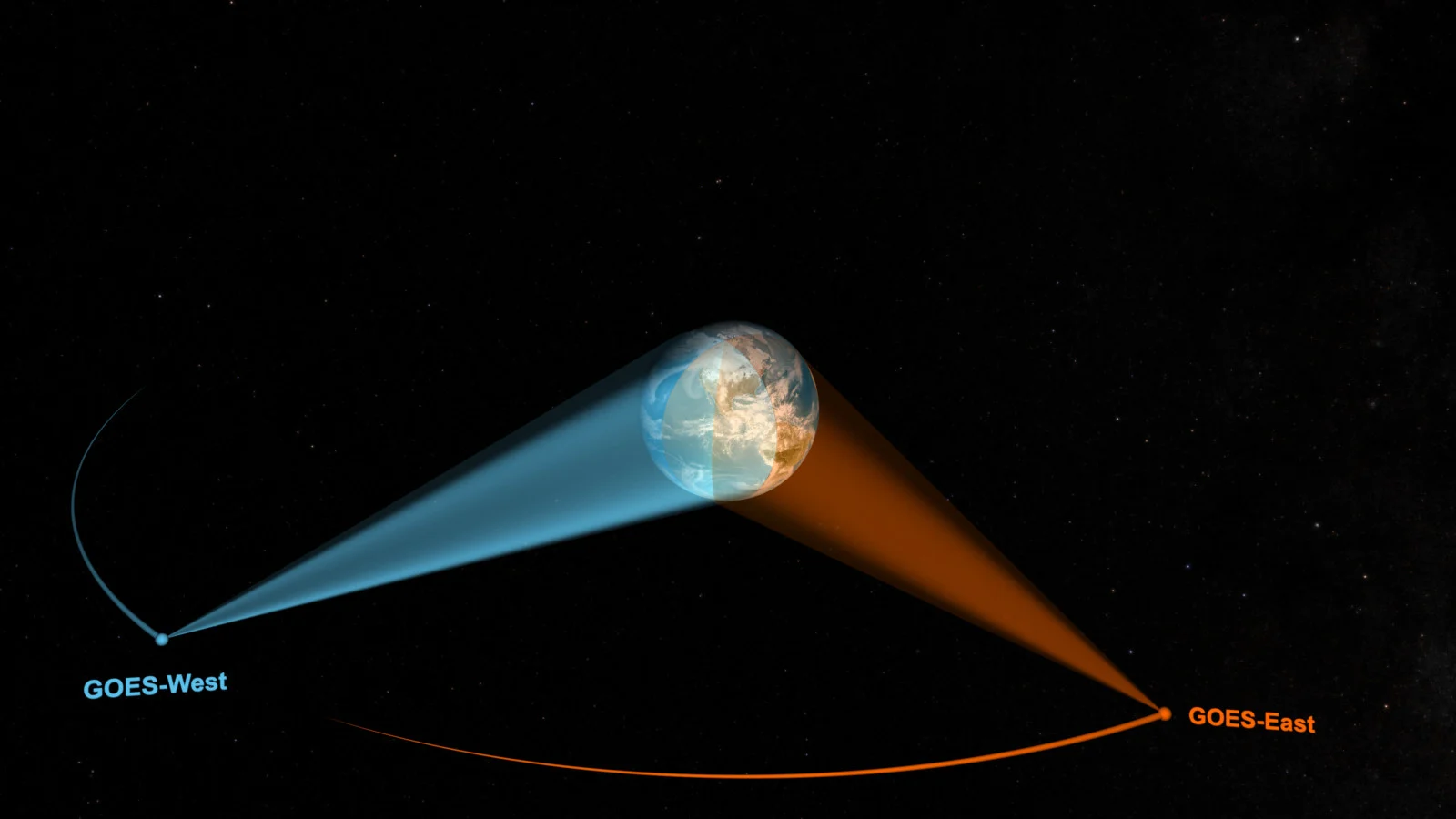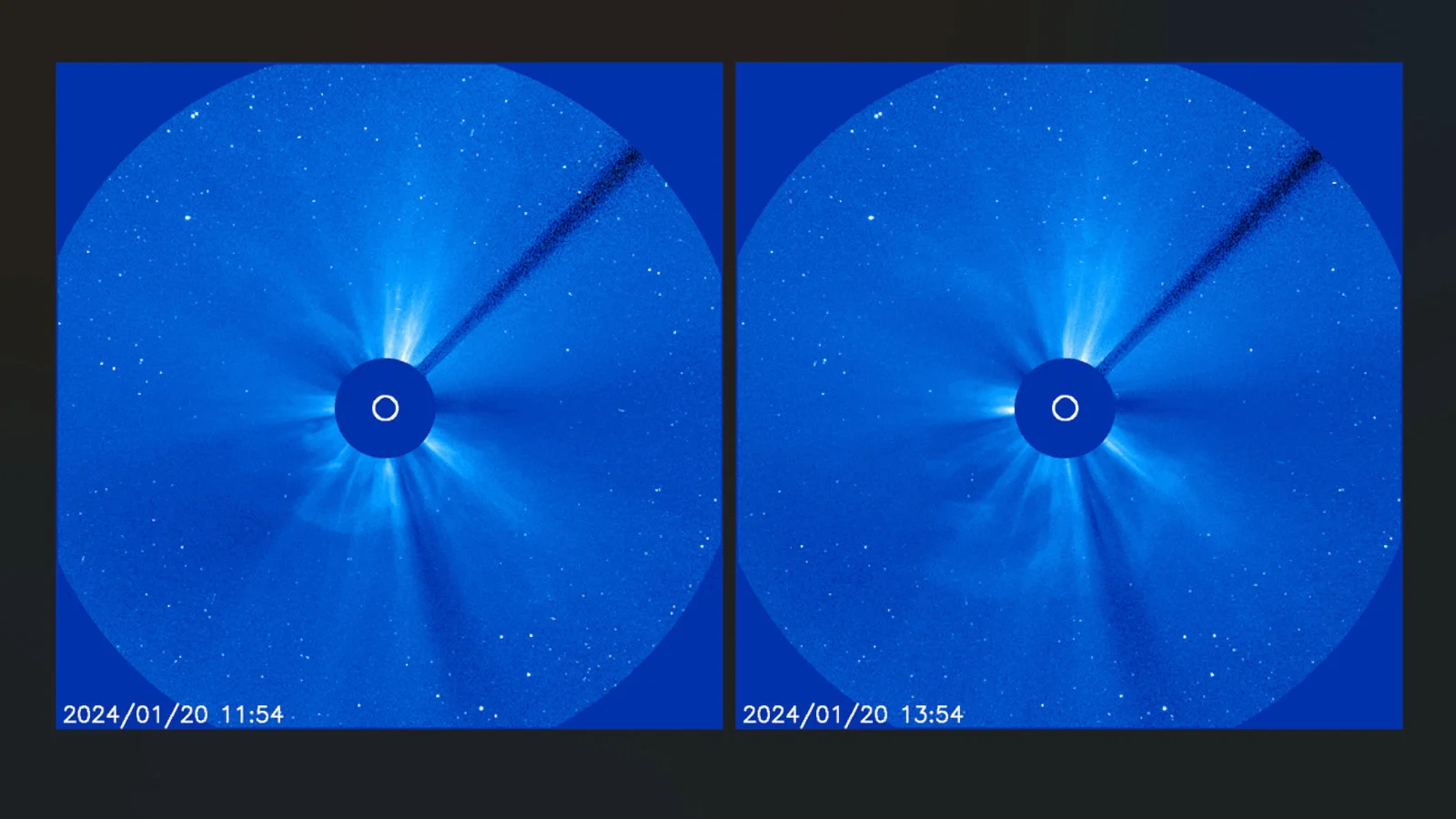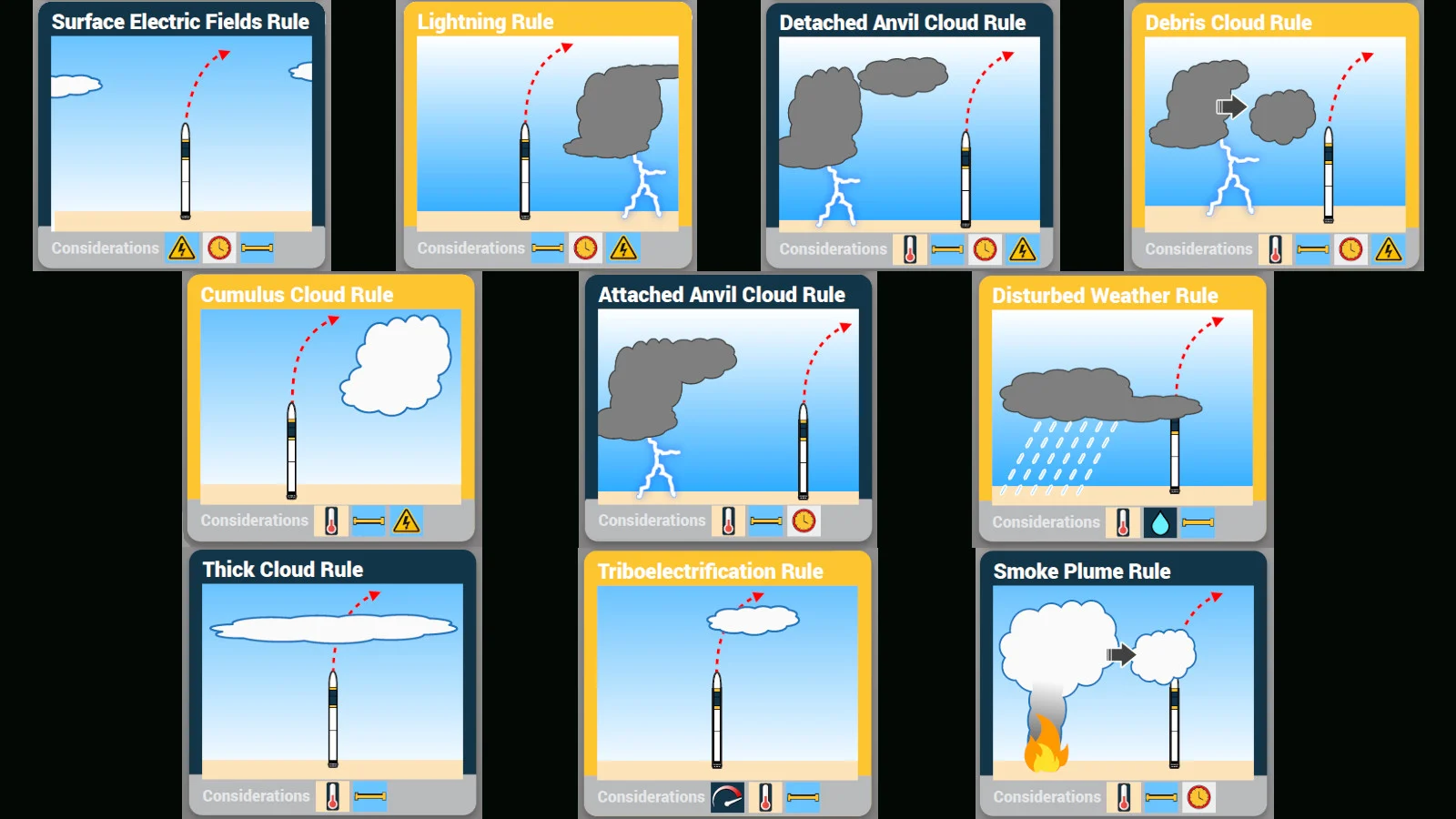
GOES-U blasts off to improve forecasts of Earth and space weather
NOAA, NASA, and SpaceX teamed up to launch the fourth and final next-gen geostationary weather satellite.

A Falcon Heavy rocket lifts off from Kennedy Space Center Launch Complex 39A, carrying the GOES-U weather satellite on its journey into space. (SpaceX)
The new GOES-U weather satellite launched into space today, not only to help meteorologists produce better forecasts but also to improve predictions of space weather as well.
The final member of NOAA's next-generation series of weather satellites lifted off from Kennedy Space Center on Tuesday, June 25, at 5:26 p.m. EDT.
Although the previous three GOES satellites — GOES-R, S, and T — were carried into space by Atlas V rockets, this is the first to blast off atop a SpaceX Falcon Heavy, one of the most powerful rockets in the world.
GOES-U needed that extra power, too. A Falcon 9 booster will get you into low-Earth orbit, around 400 km up. However, GOES-U needed something extra to reach its destination in geostationary orbit, located 36,000 kilometres out into space. Not only is it a big satellite, but the Falcon Heavy is providing extra thrust that may save GOES-U fuel on its journey. That may actually extend the lifespan of its mission.
Just as GOES-R, S, and T were renamed to GOES-16, 17, and 18, respectively, GOES-U will be renamed 'GOES-19' once it reaches geosynchronous orbit over the western hemisphere.

The GOES mission's geostationary orbit around Earth, at 36,000 km out, showing the POV of each satellite position 'GOES East' and 'GOES West'. (NASA's Scientific Visualization Studio)
There are two satellite perspectives used by the overall GOES mission. GOES East is located at 75° W longitude (above the east coast of the United States) and GOES West at 137° W longitude (over the eastern Pacific Ocean). Two satellites operate at each position, one as the primary and one as the backup.
Currently, GOES-16 is the primary at the GOES East position. Once GOES-19 arrives, it will begin testing and calibrating its cameras, and then eventually take over that primary position. GOES-16 will move into a support role in case GOES-19 suffers any difficulties that may take it offline or compromise the weather data it sends back from space.
At the GOES West position, GOES-18 is the current primary, having taken over that spot from GOES-17 in January 2023. This switch-up was due to a flawed cooling system in GOES-17's Advanced Baseline Imager, which allowed excess heat to interfere with the nighttime infrared imagery the camera was attempting to capture.
A new perspective on space weather
Solar activity has been increasing as we approach the peak of Solar Cycle 25, and the timing of GOES-U's launch couldn't be better.
In addition to all of their Earth-observing instruments, each of the GOES-16, 17, and 18 satellites has two additional on-board cameras. The Extreme Ultraviolet and X-ray Irradiance Sensors (EXIS) and the Solar Ultraviolet Imager (SUVI) both point at the Sun, using special filters to block out most of the light and capture the details of activity going on at or near its surface. This allows the satellites to monitor solar flares, coronal holes, and other solar activity that may have an impact on Earth.
GOES-U has its own EXIS and SUVI cameras, but also brings along a new instrument the other three satellites do not have — the Compact Coronagraph-1 or CCOR-1.

This artist's conception drawing shows the different instruments on board GOES-U, including the new CCOR-1 coronagraph. (Image credit: Lockheed Martin. Labels added by Scott Sutherland)
A coronagraph is a special camera that deploys a small disk out in front of its lens, to block direct sunlight from affecting the instrument's sensors. This disk mimics the effects of a total solar eclipse, allowing the camera to record activity occurring in the solar corona. This includes the eruption of coronal mass ejections, aka CMEs or solar storms, which can result in bright aurora displays and power grid disruptions as they sweep past Earth.
The only other coronagraph currently observing the Sun from Earth's vantage point is LASCO, the Large Angle and Spectrometric Coronagraph, on board the NASA/ESA Solar and Heliospheric Observatory (SOHO).

Two coronagraph images from SOHO, showing a coronal mass ejection expanding out into space. The blank region at the centre of each image is a small disk in front of the lens, which blocks direct sunlight from entering the camera. The Sun's location is indicated by the white circle. (NASA/ESA SOHO)
With SOHO having launched in 1995, CCOR-1 represents a nearly 30-year leap forward in camera resolution and image quality.
The data sent back by this camera will provide space weather scientists with an unprecedented view of the solar corona and coronal mass ejections, to better track their expansion into space and predict their potential geomagnetic impacts on Earth.
READ MORE: Once-in-a-lifetime northern lights dance across North American skies
Weather GO for launch!
On Monday, the U.S. Space Force's 45th Weather Squadron issued a forecast for the GOES-U launch, stating that there was a 70 per cent chance that late afternoon conditions on June 25 would violate the weather constraints NASA imposes on rocket launches.
That left only a 30 per cent chance that the GOES-U launch could go ahead as planned.
Fortunately, a more detailed analysis of the weather conditions on Tuesday allowed the forecasters to find an optimal timing for the launch.

NWS radar from Melbourne, FL, shows active weather to the west of the Space Coast on June 25, 2024. (National Weather Service)
Based on their analysis, the launch window was pushed to 10 minutes later than was originally set, and the rocket lifted off without incident, missing the storms that were crossing Florida at the time.
Weather constraints?
Cloudy and rainy conditions make launch day challenging for both the crews and the crowds that gather to watch. However, the primary concern forecasters with the 45th Weather Squadron look out for involves the potential for lightning.
These are known as the Lightning Launch Commit Criteria.

The 45th Weather Squadron's Lightning Launch Commit Criteria (LLCC) each describe weather conditions in the vicinity of the launch platform with the potential to produce a lightning strike or for the launch itself to trigger a lightning strike. (U.S. Space Force 45th Weather Squadron)
READ MORE: Lightning strikes almost doomed the 1969 Apollo 12 Moon mission
"Given the evening launch window, the probability of violation is elevated for both the launch and back-up days, with the primary concerns being the Cumulus Cloud, Anvil Cloud, and Surface Electric Fields Rules," the forecasters wrote.
Any of those conditions could produce either natural lightning or rocket-triggered lightning, which would be potentially disastrous for the mission.
(Thumbnail image courtesy SpaceX)











